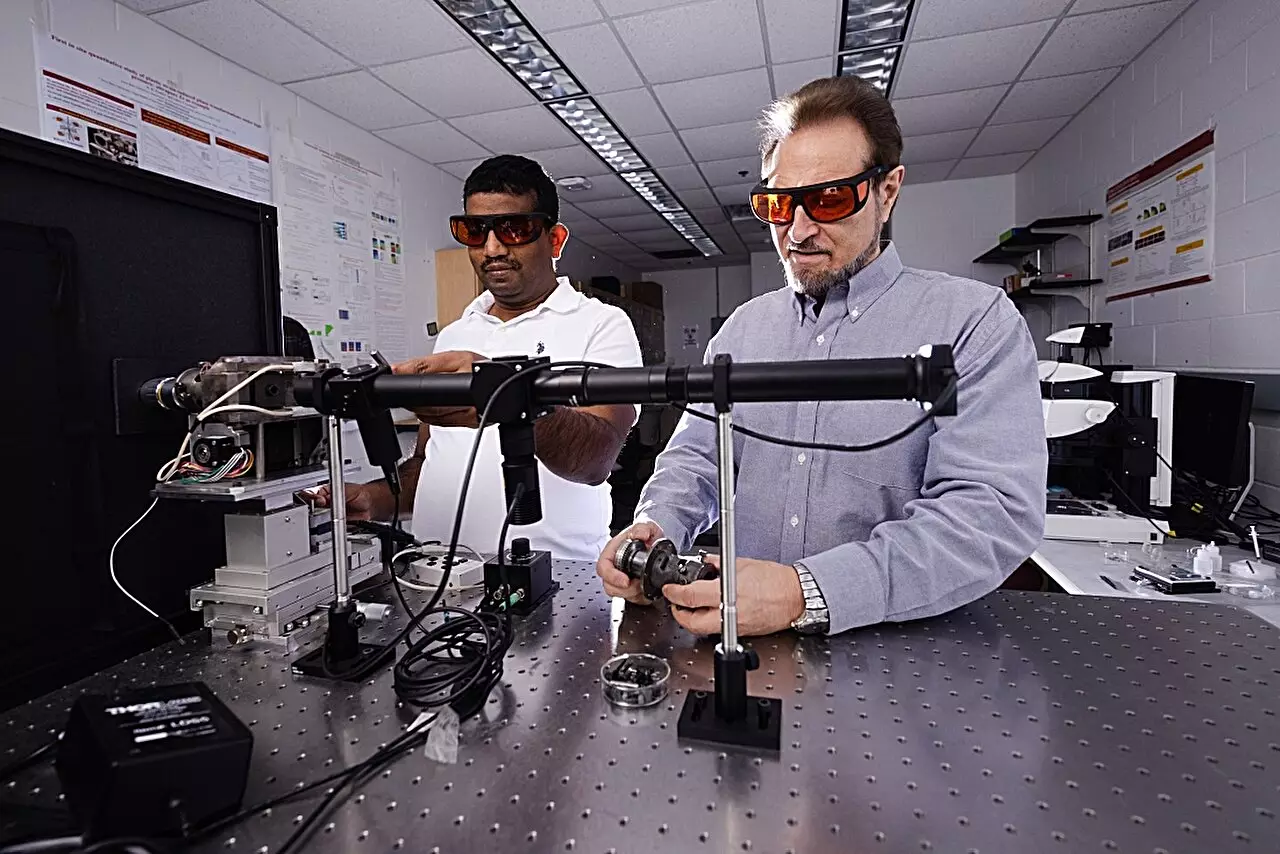In 1999, the journey of scientific advancement witnessed a notable shift when Valery Levitas relocated from Europe to the United States, bringing with him a sophisticated rotational diamond anvil cell. This ingenious device, pivotal in the realm of materials research, allows for the meticulous examination of materials under extreme conditions—specifically pressure and shear forces. Levitas, who now serves as a distinguished professor at Iowa State University, leads a dynamic research team that has significantly expanded upon this original apparatus with state-of-the-art modifications. The essence of their work lies in understanding what occurs at a molecular level within materials when subjected to these conditions, thereby bridging theoretical predictions with empirical evidence.
One of the latest contributions from Levitas and his collaborators centers around silicon, a fundamental component in electronics. Their findings, recently published in the journal Nature Communications, reveal that silicon undergoes unexpected phase transformations when subjected to both high pressure and plastic shear deformation. This marks a significant advancement, as previous studies predominantly focused on the effects of pressure alone, neglecting the additional influence of shearing forces.
The research team, which includes postdoctoral associate Sorb Yesudhas and co-authors from various prestigious institutions, has explored silicon particles of varying sizes—from a mere 100 billionths of a meter to a larger 1 millionth of a meter. This thorough investigation aims to shed light on the unique strains introduced by the rotational diamond anvil cell, leading to what the researchers term “plastic strain-induced phase transformations.” Such transformations, they argue, could open the door to numerous innovative discoveries and applications.
A striking finding from their experiments involved silicon samples measuring 100 billionths of a meter across, revealing that a pressure of just 0.3 gigapascals could induce the transformation of silicon’s common “Si-I” crystal phase into the more stable “Si-II” phase. This is particularly notable as this transformation typically requires much higher pressures—around 16.2 gigapascals—when pressure is the only factor at play. By reducing the necessary pressure by a factor of 54, Levitas and his team demonstrated a groundbreaking achievement in materials science.
Levitas emphasizes that the aim of their research extends beyond merely altering the shapes and sizes of silicon samples; rather, the focus is on manipulating the microstructure of the material. This alteration in microstructure is critical, as it leads to phase transformations that can unlock new properties within the material that are potentially exploitable in various industrial applications. According to the research, different phases of silicon exhibit a range of properties, which could be harnessed for novel technologies.
What sets this research apart is the exploration of phase transformations under lower pressures, an area often overlooked by previous researchers. This innovative approach holds the promise of making advanced material properties accessible without the impracticalities associated with high-pressure processing—which has traditionally been a barrier for industrial applications. By leveraging plastic deformations rather than extreme pressures, Levitas and his collaborators are creating pathways to desirable nanostructured phases, or mixtures of phases (nanocomposites), which can be optimized for specific electronic, optical, and mechanical properties.
This work not only sheds light on fundamental scientific questions but also paves the way for practical applications in modern technology. Levitas notes that had he not anticipated silicon’s unique response under these conditions, they might not have pursued this line of inquiry. This reflects a broader theme in scientific exploration: the relationship between expectation and discovery.
Levitas’ groundbreaking research exemplifies the intersection of advanced mechanics, physics, material science, and applied mathematics. The insights gained from manipulating silicon under these innovative conditions suggest a promising future for the development of new materials with enhanced properties, potentially revolutionizing industries that rely heavily on electronic components. As researchers continue to push the boundaries of understanding in material transformations, the implications for technology and industry remain vast and exciting.

